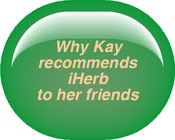POISON OAK
Poison oak grows as a shrub and is often found in areas where oak and pine trees grow. It is common in sandy soils. In the spring and summer, the leaves are deep green. Hanging clusters, yellowish green flowers display in the spring and turn to clusters of greenish white berries. In the fall the leaves can turn red, yellow, orange or reddish black. Native Americans once used the plant for black dye. Poison oak has no leaves in winter or early spring. The stems are grayish to light brown and can be up to five feet tall.
The leaves grow in threes off of one stalk. Two of these grow at a 90 degree angle off of the stalk and the third is attached to the end of the stalk. The leaves have randomly lobed edges that resemble leaves of the white oak tree, often ending in a rounded tip. Sometimes, the plant will have as many as five leaflets on a stalk, but three is most common.
Poison ivy most commonly grows as a vine but also has some shrub varieties. As with Poison Oak, the leaves grow three to a stem, but can have as many as 5 to 7 per stem. The leaves are not lobed, but can be angularly notched and they taper to a point at the tip.
POISON SUMAC
This plant loves swampy areas and can grow 15 to 20 feet high. A single leaf will have a reddish stem which produces 7 to 30 green leaflets that have smooth edges. Sweet-smelling flowers are produced in the spring that produce bunches of cream-colored berries. In the fall, these leaves turn bright red and yellow.
Your next line of defense is to prevent contact with the plant. Wear gloves and clothing that covers arms and legs – shoes that cover feet when moving through brush or working around plants. Avoid crushing stems and leaves with your hands or scrubbing against them with your body.
Don't go near any burning brush pile. If there's poison oak, ivy or sumac in the pile, the oil takes to the air and can get into your lungs. You can develop serious lung inflammation as well as a rash over your entire body. The lung inflammation can sometimes be deadly.
There are topical creams* on the market that can be applied prior to exposure. Some contain bentoquatam, a type of bentonite clay. These topical claylike lotions, which are available over the counter, form a protective barrier that guards skin against urushiol and keep it from binding to the skin’s natural oils. Before going out, rub some outdoor cream on exposed skin.
(*i.e.: Ivy Block Lotion, Hylands' Ivy Block Lotion, Enviroderm Ivy Block)
Urushiol is an oil that penetrates the top layer of skin and binds to cells deep in the epidermis. Bonding can take place in as little as 3 minutes, but on average is often closer to 30 minutes. Any solvent or soap will remove urushiol oil from the skin prior to bonding.
WHEN YOU'VE BEEN EXPOSED
Once you’ve come in contact with urushiol (or suspect that you have), immediately rinse with plain water.
Use a fine grit dry soil – not coarse, but the kind you’d find on a footpath -- as a powder on your exposed skin. The fine soil tends to absorb the oil. Use it to gently pat off the urushiol. Be sure to pat this as rubbing could spread the oils.
Wash the affected area as soon as possible with cool-to-warm water and a properly made lye soap. Lye soap is best because it does not strip the skin of its own protective oils. Other soaps will remove this protective coating from the skin and could help increase the rate of allergic response. Be sure to wash your hands and nails carefully. If urushiol remains on your hands then you can spread the oils to any other body parts you touch. Then lather again and let the area air dry.
Organic solvents can be used such as mineral spirits, rubbing alcohol, witch hazel. And never, never ever use petroleum derivatives (kerosene, gasoline, etc) on one's skin after one has been exposed to urushiol. Such products only damage one's skin and enhance the toxic oils ability to penetrate.
TREATING THE ITCH
There are at least four methods of treating the urushiol allergic rash: bath soaks, paste applications, topical liquid applications and poultices. Scratching does not spread the rash unless you still have urushiol on your hands. However, scratching WILL increase the itch response and make your recovery more unpleasant.
Oatmeal -- Take a warm bath to which you've added a few tablespoons of plain oatmeal ground in a blender. The oatmeal will help dry a rash that has started to blister, and also relieves the itch. Use a wire strainer or cheesecloth to cover the drain and keep the oatmeal from clogging your pipes. Be careful when getting out -- oatmeal makes the tub very slippery.
Epsom salt -- to dry out the rash, relax in a bath containing Epsom salt. Follow the label directions.
Pastes can be made with various products that will help draw the fluid from the blisters, reduce inflammation and speed healing while reducing the itch.
Plantain (Plantago major) is a common weed that works wonders as an itch and pain reliever. It is very healing to the skin. Grind up leaves and stems into a paste (either using a blender or even chewing them in your mouth), apply to skin.
Goldenseal root (Hydrastis Canadensis) have anti-inflammatory properties. Grind them into a paste and apply to affected areas. Some people add aloe vera gel to this application.
Jewelweed (Impatiens aurea) is often found near places where poison ivy grows. The leaves and the juice from the stem of Jewelweed are used by herbalists as a treatment for poison ivy, oak and other plant induced rashes, as well as many other types of dermatitis. Jewelweed works by counter-reacting with the chemicals in other plants that cause irritation. When you are out in the field and find you have been exposed to poison ivy, oak, or stinging nettle you can reach for the jewelweed plant and slice the stem, then rub its juicy inside on exposed parts. This will promptly ease irritation and usually prevents breakout for most people. Jewelweed leaves don’t dry well for keeping because of the high moisture and oil content of the leaves.
An alternative way to store jewelweed is to brew the chopped leaves in boiling water until you get a dark orange liquid. Yellow Jewelweed will not yield orange color and may not be effective. Strain the liquid and pour into ice cube trays. When you have a skin rash, rub it with a jewelweed cube onto the skin to benefit from its healing properties. It will keep in freezer up to a year. Use the fresh leaves as an ingredient in soap. Do not make alcoholic tinctures from Jewelweed because some people have had a bad reaction using jewelweed with alcohol.
Baking soda (and alum) mixed with water to form a paste (3 parts baking soda to 1 part water). Add Alum to this paste to increase its styptic effect.
White vinegar -- Use a vinegar compress to dry the rash and relieve itching. Mix a half-cup white vinegar with 1½cups water. Chill in the refrigerator. When you need cool relief, moisten a cloth in the solution and press it onto the rash.
Additional liquid ingredients that can be added to this include:
Lemon juice
Honey suckle leaves, steeped in HOT water until cooled to room temperature
Witch hazel -- using a cotton ball, treat your rash with witch hazel, which has a great reputation as a skin soother. The kind that comes in an alcohol solution cools your skin as it evaporates.
Cold milk -- soak a cloth in cold milk and hold it against your skin. Cold milk is more soothing to itchy skin than cold water. Exactly why milk relieves itching is unknown, but perhaps it's the milk fat.
POULTICE
Tea bags -- Moisten a plain old tea bag (black or green, it doesn't matter) and apply it to the itchy skin. The tannic acid in tea, which is astringent, helps contract inflamed tissue and relieve the itching.
OTHER TREATMENTS
Calamine lotion can be dabbed onto the rash. This remedy helps relieve itch and will help dry up blisters. If you find the lotion too runny, just mix in a little cornstarch.
Whatever method(s) you use, prompt treatment is always prudent. This article is for information purposes only. Utilize these methods at your own risk and using your own discretion.









0 comments :
Post a Comment